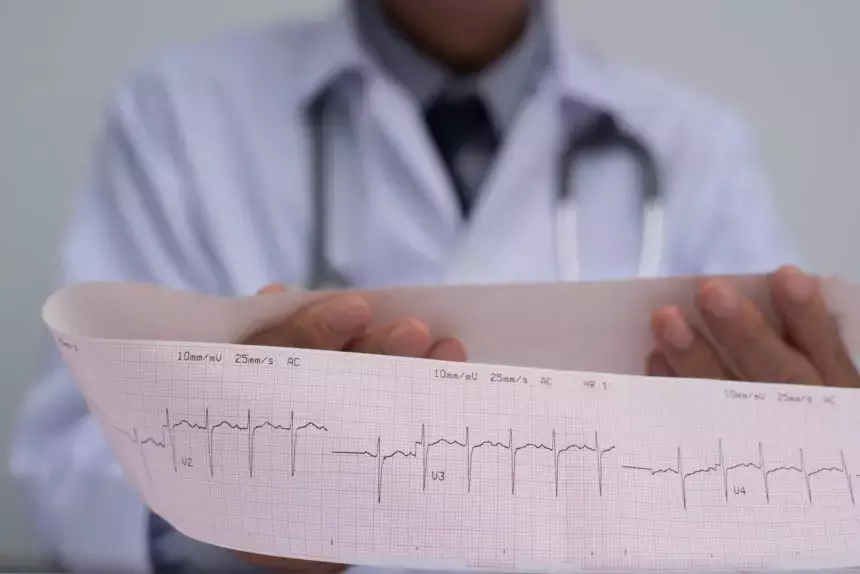- Home
- Medical news & Guidelines
- Anesthesiology
- Cardiology and CTVS
- Critical Care
- Dentistry
- Dermatology
- Diabetes and Endocrinology
- ENT
- Gastroenterology
- Medicine
- Nephrology
- Neurology
- Obstretics-Gynaecology
- Oncology
- Ophthalmology
- Orthopaedics
- Pediatrics-Neonatology
- Psychiatry
- Pulmonology
- Radiology
- Surgery
- Urology
- Laboratory Medicine
- Diet
- Nursing
- Paramedical
- Physiotherapy
- Health news
- Fact Check
- Bone Health Fact Check
- Brain Health Fact Check
- Cancer Related Fact Check
- Child Care Fact Check
- Dental and oral health fact check
- Diabetes and metabolic health fact check
- Diet and Nutrition Fact Check
- Eye and ENT Care Fact Check
- Fitness fact check
- Gut health fact check
- Heart health fact check
- Kidney health fact check
- Medical education fact check
- Men's health fact check
- Respiratory fact check
- Skin and hair care fact check
- Vaccine and Immunization fact check
- Women's health fact check
- AYUSH
- State News
- Andaman and Nicobar Islands
- Andhra Pradesh
- Arunachal Pradesh
- Assam
- Bihar
- Chandigarh
- Chattisgarh
- Dadra and Nagar Haveli
- Daman and Diu
- Delhi
- Goa
- Gujarat
- Haryana
- Himachal Pradesh
- Jammu & Kashmir
- Jharkhand
- Karnataka
- Kerala
- Ladakh
- Lakshadweep
- Madhya Pradesh
- Maharashtra
- Manipur
- Meghalaya
- Mizoram
- Nagaland
- Odisha
- Puducherry
- Punjab
- Rajasthan
- Sikkim
- Tamil Nadu
- Telangana
- Tripura
- Uttar Pradesh
- Uttrakhand
- West Bengal
- Medical Education
- Industry
ST-elevation in precordial leads major predictor in acute total left main occlusion, study finds

China: A new study published in BMC Cardiovascular Diseases shows that in unprotected left main (ULM) artery occlusion, ST-segment elevation (STE) in the precordial leads predicted the lack of collateral circulation, but STE in aVR and STE in both aVR and aVL predicted various collateral filling areas.
There is a scarcity of information on the clinical features, electrocardiogram (ECG) findings, and outcomes of patients with acute myocardial infarction (AMI) caused by total unprotected left main artery blockage. As a result, Chunwei Liu and colleagues conducted this study to examine the collateral circulation, clinical characteristics, and ECG features of patients with acute total ULM blockage (TIMI 0) and to investigate the association between these parameters and clinical outcomes.
A total of 44 patients, between 2009 and 2021, with AMI due to total ULM blockage were treated at our hospital with primary percutaneous coronary intervention (PCI). The ECG, collateral circulation, clinical and procedural features, as well as in-hospital mortality, were all assessed retrospectively.
The key findings of this study were as follow:
1. Twenty-five people came with shock, and 18 died in the hospital.
2. Nineteen individuals had ST-segment elevation myocardial infarction (STEMI), while 25 had non-ST-segment elevation myocardial infarction (NSTEMI).
3. The absence of collateral circulation was linked with ST-segment elevation (STE) in I and STEMI, whereas the presence of collateral circulation was associated with STE in aVR.
4. Patients with STE in both aVR and aVL in the NSTEMI group had a greater collateral filling of the left anterior descending coronary artery (LAD) region, whereas patients with STE in aVR had a greater collateral filling of the LAD and the left circumflex artery territory.
5. Patients with partial ULM obstruction had greater STE in aVR, less STE in aVR and aVL, and less STEMI than patients with entire ULM occlusion.
6. Shock, TIMI 0–2 flow after PCI, non-STE in aVR, STEMI, and STE in I all predicted in-hospital death.
7. STEMI and the lack of collateral flow were both linked with shock.
In conclusion, STE in both aVR and aVL leads is a good sign for distinguishing entire ULM obstruction from partial ULM occlusion. Patients who report with STE in both channels aVR and aVL should be identified as high-risk and undergo immediate coronary angiography.
Reference:
Liu, C., Yang, F., Zhang, J. et al. Electrocardiographic patterns predict the presence of collateral circulation and in-hospital mortality in acute total left main occlusion. BMC Cardiovasc Disord 22, 144 (2022). https://doi.org/10.1186/s12872-022-02585-x
Medical Dialogues consists of a team of passionate medical/scientific writers, led by doctors and healthcare researchers. Our team efforts to bring you updated and timely news about the important happenings of the medical and healthcare sector. Our editorial team can be reached at editorial@medicaldialogues.in.
Dr Kamal Kant Kohli-MBBS, DTCD- a chest specialist with more than 30 years of practice and a flair for writing clinical articles, Dr Kamal Kant Kohli joined Medical Dialogues as a Chief Editor of Medical News. Besides writing articles, as an editor, he proofreads and verifies all the medical content published on Medical Dialogues including those coming from journals, studies,medical conferences,guidelines etc. Email: drkohli@medicaldialogues.in. Contact no. 011-43720751


